Township
History
Township History
West Penn Township was settled in 1756 and incorporated in 1811. West Penn Township extends from the top of the Blue Mountain to the south and Tamaqua Borough to the north. The Township is approximately 58 square miles, with over 150 miles of roads. The Township has three zip codes: 18211 Andreas, 17960 New Ringgold, and 18252 Tamaqua, within its borders
The early settlers of West Penn Township came from south of the Blue Mountain and were primarily of German origin. These settlers found evidence of Indian villages, mounds and burial grounds. Skirmishes with the Indians in the Township were not uncommon. Fort Franklin was built in 1756 near Snyders, as part of a series of forts along the Blue Mountains, to help maintain the safety and welfare of the first settlers. Among the first settlers in the 1760’s were Steigerwalt, Gilbert, and Ohl, who settled in the Lizard Creek area.,
Farming was the first activity in the township. Later with the influx of settlers came stores, mills, and taverns. Stores, and later a tavern by Tobias Wehr, sprung up along Lizard Creek sometime around 1780. Mantz’s store, located in what later became known as Mantzville, was operating around 1807, and in 1832 came the Steigerwalt’s store. Later Adam Andrew’s store was established along Lizard Creek. The Zehner family built a grist mill in Mush Valley about 1763, and later Michael Ohl built another grist mill along Lizard Creek in 1812. Other mills throughout the township were built in 1827, 1830, 1831 and 1835. Several tanneries were established in the years 1822, 1836, 1839 and 1859. As agriculture became more mechanized in the 1830’s Elias Snyder and Son was established in 1869, specializing in threshing machines.
Geography
According to the United States Census Bureau, the township has a total area of 58.2 square miles (150.7 km²), of which, 58.0 square miles (150.2 km²) of it is land and 0.2 square miles (0.6 km²) of it (0.38%) is water. It extends from Blue Mountain in the south, to the border of Tamaqua in the north, and from the Carbon County border in the east, to the Little Schuylkill River in the west, which drains most of its area. Portions of West Penn are also drained into the Lehigh River via the Mahoning and Lizard Creeks, which both originate in the township.
Neighboring
Municipalities
Neighboring Municipalities
- Tamaqua (north)
- Walker Township (west)
- East Brunswick Township (southwest)
- Albany Township, Berks County (south)
- Lynn Township, Lehigh County (south)
- Heidelberg Township, Lehigh County (tangent to the southeast)
- East Penn Township, Carbon County (east)
- Mahoning Township, Carbon County (northeast)
- Summit Hill, Carbon County (northeast)
Demographics
In the township, the population was spread out with 22.0% under the age of 18, 6.5%, from 18 to 24, 27.7%, from 25 to 44, 28.4% from 45 to 64, and 15.4% who were 65 years of age or older. The median age was 41 years. For every 100 females there were 103.2 males. For every 100 females age 18 and over, there were 102.6 males.

